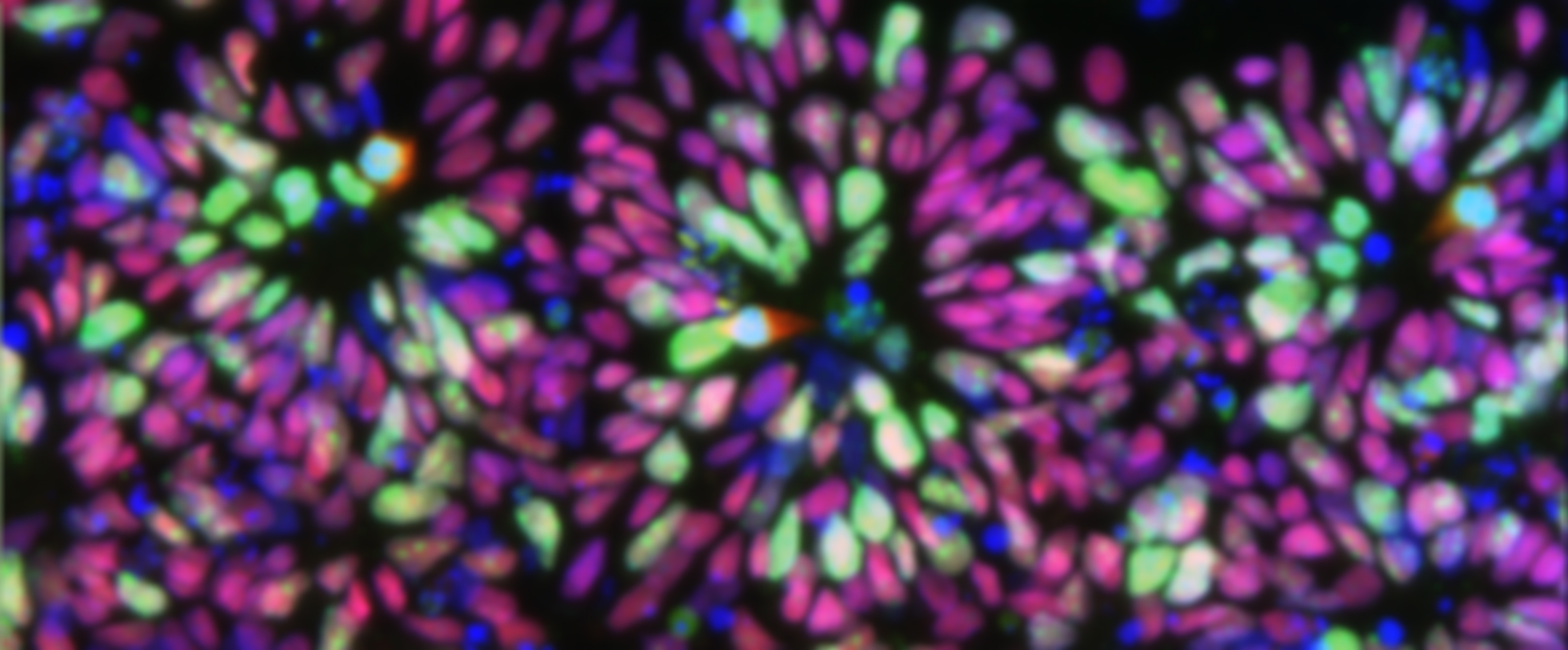Functional interactions between DNA regulatory elements in the locus control region (LCR) and the beta-globin gene
The human beta-globin LCR is a powerful control element that directs high-level expression in transgenic mice at all integration sites. Such LCR elements have great utility in generating animal models of disease and for human gene therapy and to properly apply this technology will require an understanding of their mechanism of action.
To function at all integration sites, we showed that the beta-globin LCR is dependent on:
- the AT-rich region in beta-globin intron2
- the 3′ enhancer that co-localizes with a novel origin of DNA replication.
We hypothesized that LCR activity is dependent on functional interactions with these two beta-globin gene proximal elements. These proximal elements were proposed to complement LCR activity by defining a novel 3′ origin of DNA replication, and by mediating attachment to the nuclear matrix or by modulating local nucleosome structure and position.
This work was funded by CIHR.
Cystic Fibrosis and lung disease
Cystic Fibrosis (CF) is caused by mutations in the CFTR gene that was originally isolated at Sickkids. It is challenging to model this lung disease and therefore we isolated CF patient iPS cells for this purpose. The stem cells were differentiated into lung epithelia by the Rossant lab and the effect of a candidate drug tested by the Bear lab. Given the success of this approach, we continue to collaborate with the CF Centre at SickKids to generate iPS cell lines to be used for drug screens that will facilitate personalized medicine for CF patients.
This work was funded by a CIHR Team.
Mechanisms of retrovirus silencing
Gene silencing is of fundamental importance during metazoan development for crucial decisions such as embryonic body segmentation. Our long-term goal is to identify and characterize the host defence mechanism that silences transcription of retrovirus DNA in mammalian stem cells. Ultimately this basic knowledge can be applied to overcome a major obstacle to the study of stem cell biology and the development of gene therapies – the frequent silencing of retrovirus vectors in transduced stem cells.
We have shown that retrovirus vectors are silenced by a pathway conserved in transgenic animal models, that is independent of de novo methylases in mouse ES cells, and marked by a repressive histone code composed primarily of deacetylated histone H3 and bound H1. Although DNA methylation is not required for silencing, it may account for our finding that a CpG-free EGFP reporter gene is less prone to silencing. We found that some retrovirus integration sites become variegated and display rapid transcriptional pulsing that contributes to transcriptional noise. As somatic cells reprogram into iPS cells, they silence retrovirus vectors but also reorganize heterochromatin that, in contrast to widely held models, is composed of 10 nm fibres (with the Bazett-Jones lab). We showed that retrovirus silencing can be diminished by treatment with an epigenetic inhibitor provided by the SGC. We also designed retrovirus vectors that incorporate the D4Z4 insulator element to escape silencing, and the ability to delete this insulator allowed us to discover the dynamics of silencing at different integration sites.
This work was funded by CIHR and a CIHR-JST team.
Designing lentivirus vectors for gene therapy in sickle cell anaemia
Sickle cell anaemia (SCA) is caused by a mutation in the beta-globin protein. Two beta-chains form a tetramer with two alpha-globin chains to form hemoglobin, which transports oxygen through the blood. In SCA the mutant beta-chains polymerize which distorts the red blood cell shape and reduces the ability to carry oxygen. The Ellis lab developed a gene therapy vector for SCA that uses lentivirus vectors to deliver a gamma-globin gene controlled by proximal beta-globin elements and the LCR. This combination of elements positions the transgene into a central location in the nucleus resulting in therapeutic expression levels. Moreover the vector is protected from position effects and insertional mutagenesis by insulator elements located in the LTRs.
This work was funded by CIHR and NIH.

